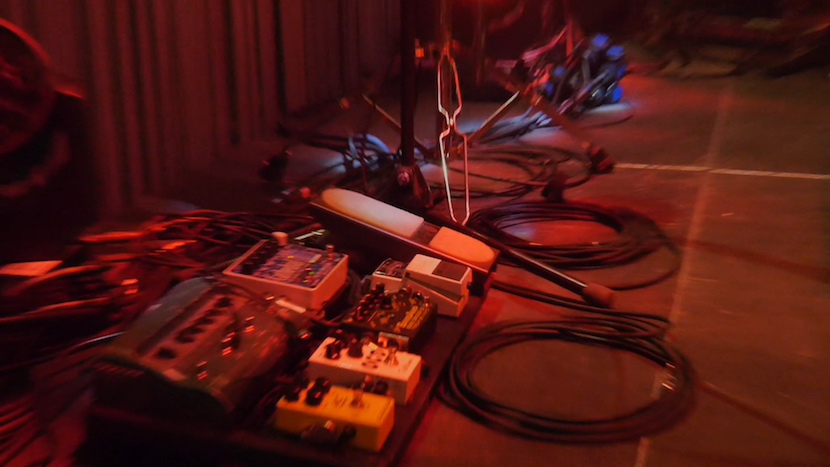
As a pedal-manufacturer we obviously love pedalboards! Regardless of whether it is a small one which never leaves the bedroom or a board that goes with you on stage night after night. It always gives us goosebumps if they are made well and the pedals fit perfectly together so that just by looking at it we can almost hear the different sounds the musician conjures up.
Since there are a lot of pedals and boards out there, we talked to two pedalboard builders we are friends with. JP Freyssinet from CUSTOM PEDAL CHAIN SYSTEM, a French company specialising in boards & cables and worldwide touring & tech services for artists like Indochine, Dexys Midnight Runners, Calogero, Archive and so on.

Venturing further north to Finland, there’s no way around Kimmo Aroluoma and his company CUSTOMBOARDS, providing and designing professional pedalboards. Currently, he also tours as a tech for HIM and has worked with bands like Amorphis, The Rasmus and Michael Monroe.
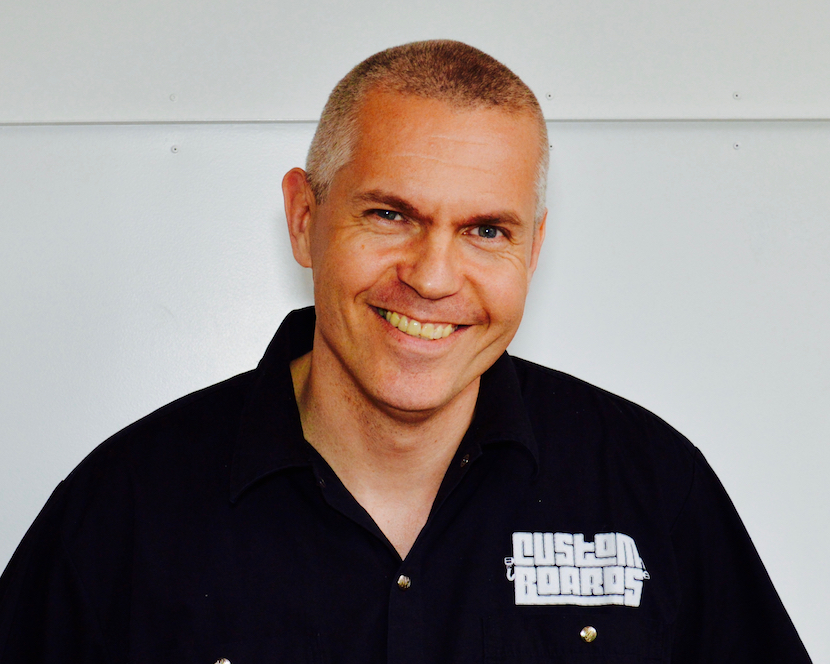
Having two such experienced interviewees leads me directly to the first question:
“When and why should a musician think about a professionally made pedalboard?”
Kimmo from CUSTOMBOARDS gets straight to the point:
“Usually we tend to stress the importance of reliability. On festivals and tours the change-over time between bands is often very limited, and on those occasions, it’s invaluable to have a rig that is quick and easy to set up and in which you can trust. If the player experiences problems in his/her shows, it would be the right time to upgrade the system. We do have customers who want to have nicely wired pedalboard in their studio, but our thing really started on preventing and solving problems on touring rigs.”
What do you want and what do you expect from your board?
JP starts by asking his customers “What do you want and what do you expect from your board?“ He says that on the one hand there is the sound and on the other, safety and reliability. He regrets that many have lost their way when it comes to reliability. And a professional pedalboard should not only be able to withstand storms, water and dust but he adds “that you need good cables, quality power supplies and a clean and clear board.”
But before we take our pedalboard on stage, there is a lot of preparation to do. I ask them if they arrange the pedals (and the signal paths) following the customer’s requests or if they advise them from experience before a build.
JP says of course he gives advice, but with respect for the desires of the customers. “When I sketch a 3D pedalboard schematic I explain my suggestion, and we discuss it before the build.”
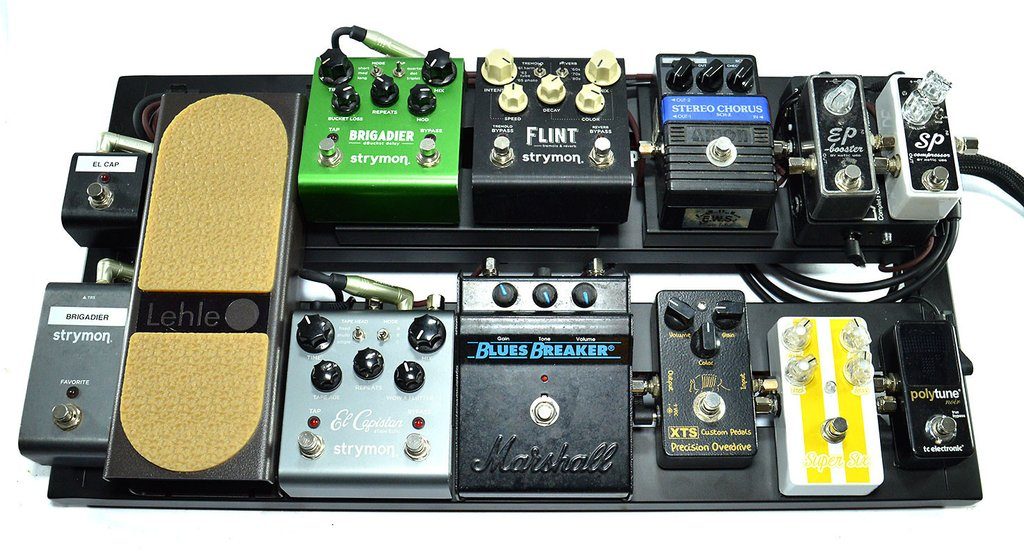
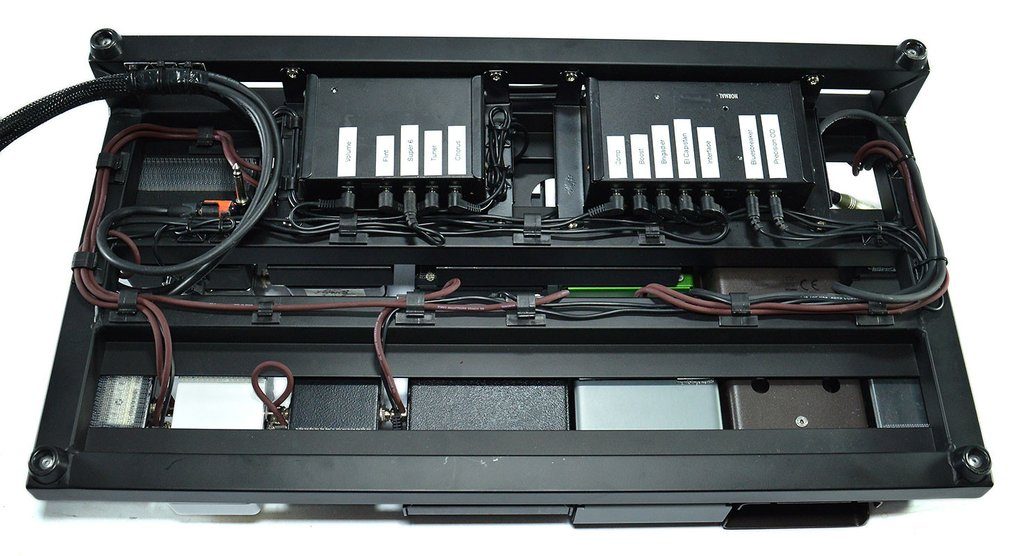
CUSTOMBOARDS have a procedure in place:
“We listen to the customer’s opinions and experiences and if he/she has pedals wired unorthodoxly we rarely change that. Actually, I am always happy to see when somebody has come up with some new sounds or effects combinations. Creativity comes first, but there has to be a starting point which you can then alter, if necessary.“ JP also mentions that “signal design sometimes doesn’t respect electrical rules, but it creates something really unique.“
Once we have arranged all the pedals, the order and signal paths, we are on to the next question:
While some boards just seem to be ‘beautiful’, they are not suitable for touring. When it comes to a professional touring board, what is the most important thing?
Both companies agree that everything has to be changeable and every effect accessible.
CUSTOMBOARDS say: “It really is a balance between durability and convertibility. If you wire everything with the proper length dress and stress relief, boards usually appear to be nice and convenient. We also like to have a possibility to plug in somewhere in the middle of the pedal chain, so in case of problems we can sort of insert ourselves in and single out the troublemaker more quickly.“
JP goes one step further: “Make it as simple as possible. No LED circuit with fabulous colours connected to your power supply. You probably like it but your lighting tech hates it.”
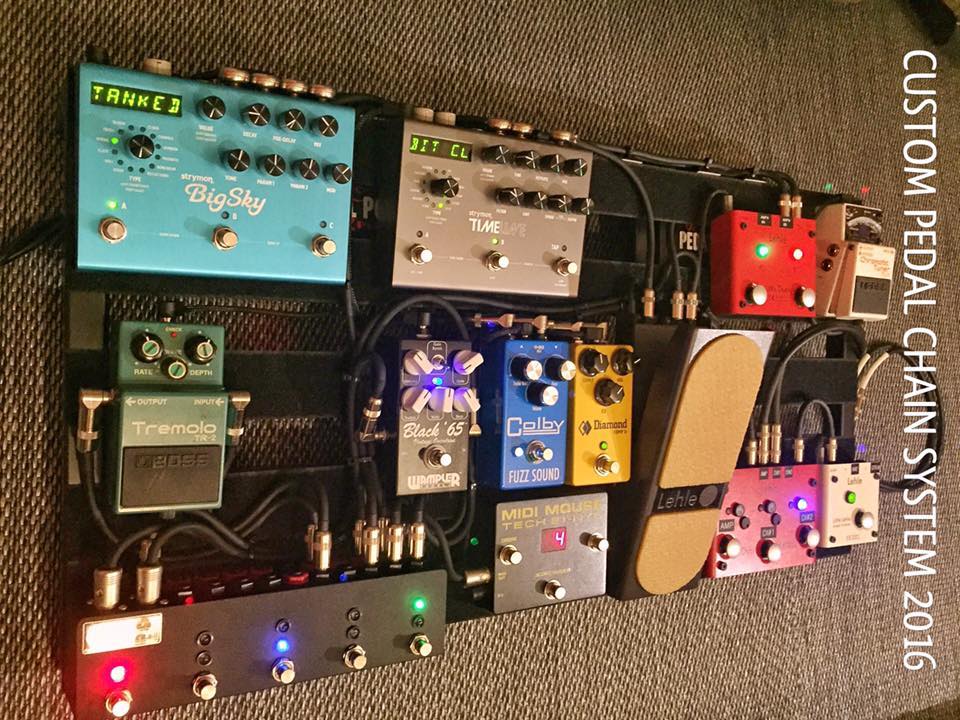
While we all have our favourite pedals and maybe some old vintage effects, I am curious if there are any pedals or manufacturers they do or don’t recommend to customers, if they want a reliable, worthwhile and long-term solution.
“There are some switchers I do not recommend,“ says JP, because they are the brain of the system, “but for effects, it’s different because sometimes poor electronics can provide something unique and it’s a personal choice.“
CUSTOMBOARDS have a more clear line: “We try to avoid cheap pedals from China, or at least tell the musician if he is making the pedalboard of his/her dreams, it does not make sense to water it down with some weak links. We also encourage them to keep the number of buffers to a minimum, to avoid colourisation in the signal chain. The pedals we recommend are the ones that have been built to certain standards with (hopefully) proper quality control“.
Ok. After the pedal chain is sorted out, the design cleared and pedals are chosen, I ask them what challenges they encounter before and while building a board?
JP laughs and says “the musician itself!“. More seriously he believes that it’s really difficult to anticipate what the musician wants, now, tomorrow or for the next tour and also to understand the music the musician creates. Then there’s “knowing how to squeeze the most out of the space you have on the board“. But the greatest challenge appears to be “how to make it as clean as the 3D sketch with all the cables and still ergonomic and easy to use“.

CUSTOMBOARDS agrees that it’s a challenge to figure out what the player really needs on the pedalboard. “If you’re going on a tour, it’s not very convenient to pack all your stuff into a large board and lug that around. It’s about planning beforehand what you really need and what’s pleasant to use while playing and building the board accordingly. A pedalboard should be a thing that assists you and makes the performance more fun and enjoyable. Not vice versa.“
If you play every day in an arena with 11000 people, you’re under pressure and no mistakes are allowed.
Speaking of touring: “Even the best-built pedalboard can fail, so what about backup solutions?”
CUSTOMBOARDS are confident that if a pedalboard is designed and wired properly, it should last, as long the musician remembers to check all the connections after transport. A backup amplifier and guitar are the first things to take along. Playing live shows is always a risk to some extent, and you just have to trust professional gear, “but being able to troubleshoot your gear is important. Usually, this takes place in the soundcheck, because transporting the gear is still the most harmful part of touring.“
JP says that “if you play every day in an arena with 11000 people, you’re under pressure and no mistakes are allowed. The system you built can die one day, so a small backup solution with a few pedals should be ready every day. This allows time to repair the main system.“
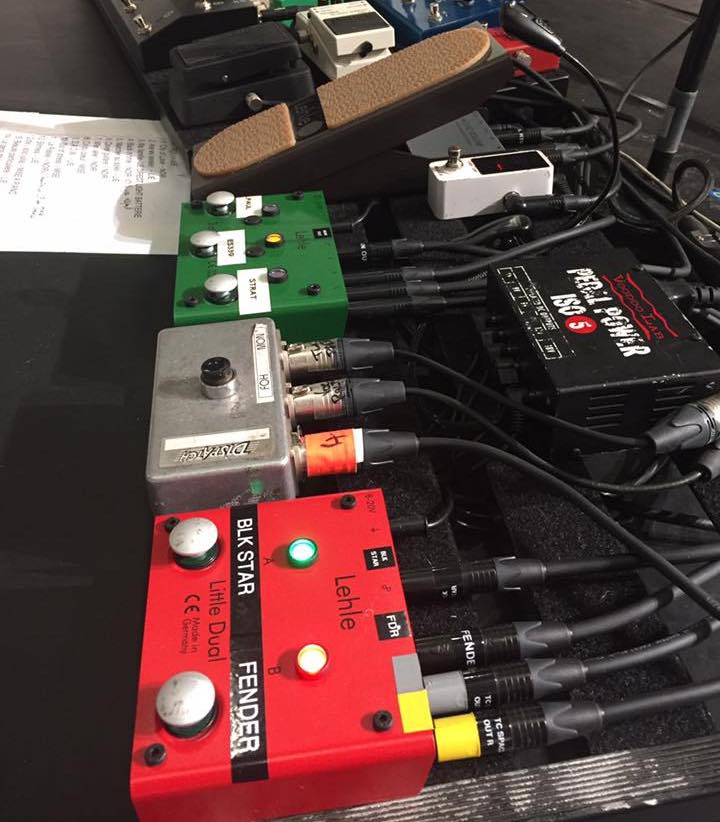
While talking about what can happen on stage, I ask them what they think about the importance of power supplies and their experiences with them.
Both agree that power supplies are like the motor of the whole system. CUSTOMBOARDS report that “most of the noise issues people have on their DIY boards is caused by cheap power supplies and a poorly thought-out powering plan, not the effects themselves. A proper power supply on a board also makes swapping and trying different pedals easier, as they’re powered properly and working like they should.“ While it is all about calculating voltage and current for the customer´s needs, he says that PSU’s rarely go down during a show, if you use one from the main manufacturers who specialise in them.
“Well, the worst is the classic daisy chain, powered by a poor transformer and a few unused and unprotected connectors… sparking.“ JP states and that high-quality power supplies are really important, as some effects are designed to be used with a specific voltage and current draw. “If you do not respect this, you add an undesired percentage of noise into your sound. Now imagine this situation with 15 pedals on a big pedalboard…“ JP adds, “I work with two brands only, as I’ve got good results in all situations!“.
Power supply experience covered.
“Are there any other do’s and don’ts?”
JP advises against solderless cables as they are not safe during long tours. He adds: “Do not leave 9 V batteries inside of the pedals if you don’t use them. Don’t mix audio cables and power cables into a loom to feed your board, use a buffer and a good volume pedal and don’t put your tuner into the signal path. Respect this and you are on your way to your dream board!“
Kimmo comes back to the planning: “If somebody makes his own board, it usually fails if the project has not been planned at all. There is also a certain order when assembling the board. If you attach your pedals to the boards too early, you end up tearing them off many times before board is ready. For CUSTOMBOARDS the planning with the musician and strict formula in wiring the boards are key to having the board exactly as the musician wishes.“

I’ve seen many of our LEHLE pedals on both company’s pedalboards. So I can’t finish the interview without asking what’s their favourite LEHLE pedal:
“LEHLE DUAL SGoS and MONO VOLUME pedal.“ JP immediately replies. “They give me a lot of great solutions, good results and safety.“
Check out his work so far: CUSTOM PEDAL CHAIN SYSTEM
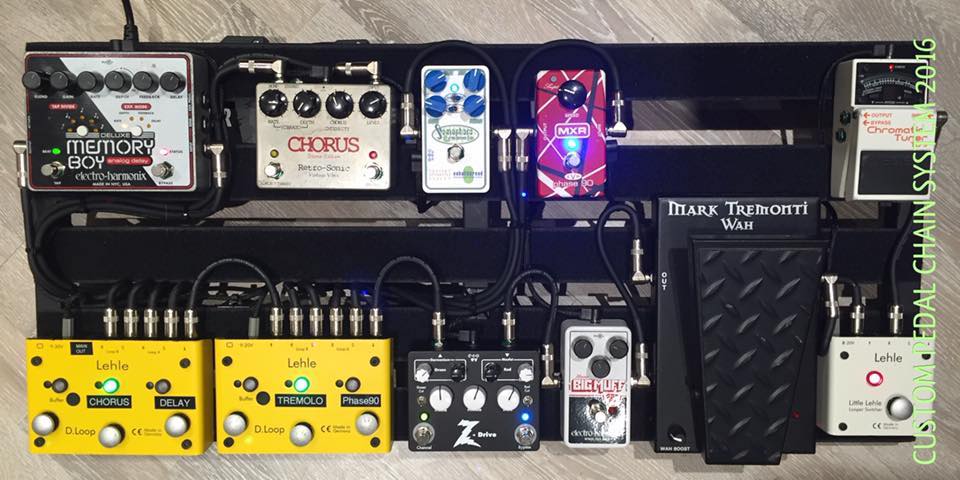
CUSTOMBOARDS explains “LEHLE P-SPLIT II is the one we use the most. I’ve done many videos (in Finnish) on how to get rid of ground loops with it, and people now seem to understand its benefits. My second choice and my personal favourite is the LITTLE DUAL, which we have installed on quite a few boards.“
And the LITTLE LEHLE II is, of course, one which many players find useful especially for changing between two instruments he then adds, “the PARALLEL L is a pedal we’ve included on some boards made for more special instruments and adventurous players, like for a trombonist or a cellist. You can really get some great results when a usually un-effected instrument is combined with some of the more “out there” effects. Also, the phase switch included on many of the LEHLE pedals is invaluable when splitting and mixing signals.“
Here is some of CUSTOMBOARDS work so far.
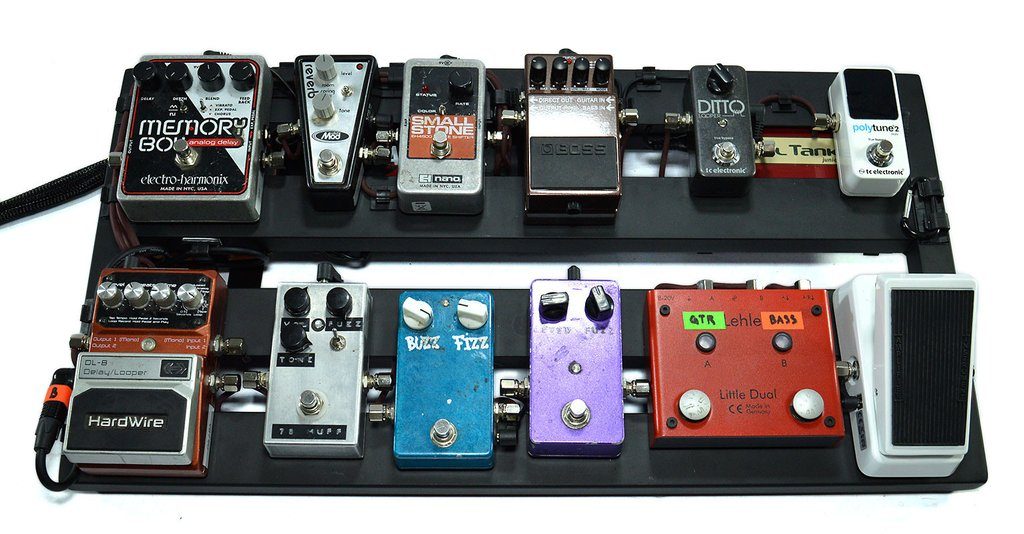
He tells me that he has been using the LEHLE pedals since his early days as a guitar tech and having the custom-made, reliable “mushroom switch“ is really the main reason he’s using them as his first choice. “There are lots of switchers out there, but they all rely on the same 3PDT or 2PDT switches which eventually break. I really look forward the new Switch Burkhard Lehle has developed and will be glad to install it to some problematic stompboxes.“
So, what’s the summary of this interview? I’d say planning, power supplies and keep it simple.
Having a chat with those experienced people was an immense pleasure, so if you’re looking for a well made and professional pedalboard with LEHLEs on it, get in touch:

